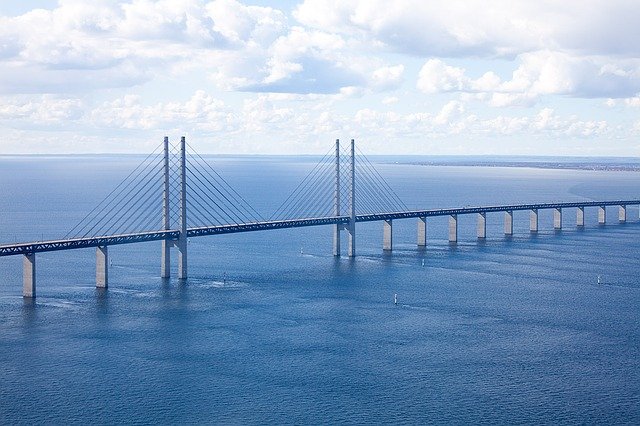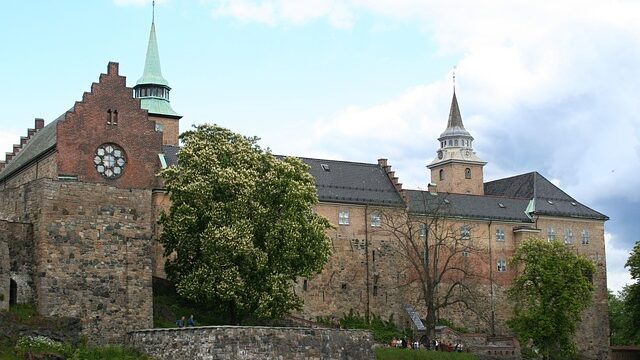Although Denmark and Sweden belong to the same Nordic countries, there is a stretch of water between the two countries called the Oresund Strait.
In the past, travel between the two countries required the use of boats, but today, travel between the two countries can be accomplished in less than 30 minutes over the Oresund Bridge, a huge bridge spanning the sea.
Here I would like to introduce the Oresund Bridge that connects Denmark and Sweden, its detailed features, and the process of its completion.
What is Oresund Bridge?

Between Sweden and Denmark, a strait called the Oresund Strait stretches like a border between the two countries.
The Oresund Bridge is a huge bridge built over the Oresund Strait.
The bridge connects Malmö in southern Sweden and Zealand in Copenhagen and is approximately 16 km long.
The bridge is characterized by its two-tiered configuration, with the upper part of the bridge being a roadway and the lower part a railroad.
It is the largest bridge in Europe that uses both rail and road.

The Oresund Bridge is a bridge between Sweden and Denmark and is operated jointly by the governments of both countries.
Tolls are charged for their use.
The name “Oresund Bridge” is an English term, and its official name in Nordic countries is “Øresundsbron.”
Oresund Bridge is also called by various other names, such as Öresund Bridge, Øresund link, and Øresund Bridge.
Bridge Structure
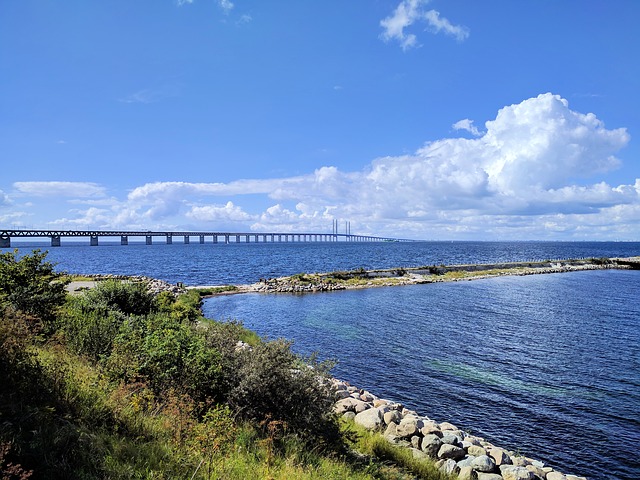
The Oresund Bridge consists of the actual bridge visible above the Oresund Strait, the man-made island of Peberholm in the center of the strait, and an undersea tunnel.
Peberholm is a 4-km-long man-made island in the Oresund Bridge, which is the relay point for the Oresund Link.
Starting from Peberholm, the bridge from the Scandinavian Islands side, where Sweden is located, to Peberholm is about 8 km long.
Conversely, from the Danish side of the Jutland Peninsula to Peberholm is an undersea tunnel approximately 4 km long.
When traveling from Denmark to Sweden, the route is uniquely designed to pass first through the undersea tunnel and then over the bridge on the surface.
History of the Oresund Strait over passage
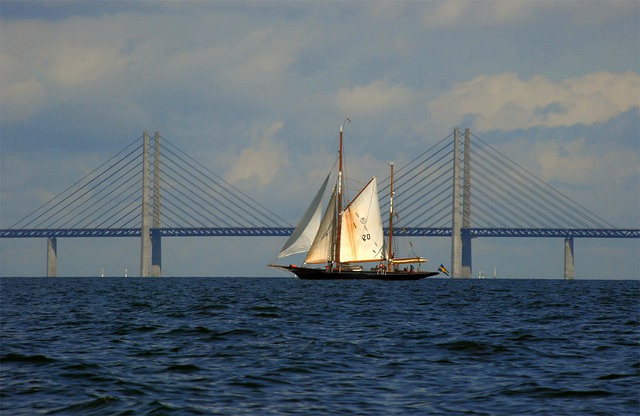
In this section, I would like to focus on the Oresund Strait, which flows between Sweden and Denmark, and the history of the maritime tolls.
The Oresund Strait lies between the Baltic Sea and the North Sea.
For this reason, the Oresund Strait has long been used as a major route for maritime trade and was an important geographical location.
This was brought to the attention of King Eric VII of Denmark, who ruled Denmark in the 15th century.
In 1429, Eric VII began to levy a toll called the Oresund Strait Toll on ships using the Oresund Strait.
Since the Oresund Strait was a major trade route at that time, the number of tolls collected was enormous.
The amount of money was said to have been enough to enrich the Danish economy, which at the time was suffering from wars with other countries, and to have greatly restored its fortunes.
On the other hand, the tax on the Oresund Strait, which was almost the only route connecting the Baltic Sea and the North Sea, was not good for the taxpayers.
In particular, it became quite unfriendly with Sweden over the strait toll tax.
The Oresund Strait toll was collected until March 1857, when the Treaty of Oresund Strait was signed, which provided for the abolition of the toll by making the strait an international waterway.
Thus, the Oresund Strait toll remained in effect for more than 400 years.
By the way, Kronborg Castle in Denmark was built by King Eric VII of Denmark as a collection center for the Oresund Strait Toll Tax.
You can read more about Kronborg Castle in this article.
https://hokuou-info.com/2021/07/21/kronborg-castle/How Oresund Bridge was completed

Next, let’s take a look at the process from the removal of the Oresund Strait toll, which stimulated the Danish economy but was also a source of worry for many traders, to the completion of the Oresund Bridge.
Although Sweden and Denmark had several disputes due to the Oresund Strait toll, they later cooperated and proceeded to jointly operate the strait.
In the latter half of the 19th century, the two governments began discussing the construction of a new facility to connect the straits.
Originally, there was a ferry service between the Oresund Strait, but the problem was that the sea would freeze over in the winter, limiting access.
Discussions between the two countries were quite difficult, and it was not until 1991 that the official decision was made to build the bridge.
Construction of the bridge began in 1995.
On July 1, 2000, five years after construction began, the road was successfully opened to traffic.
Queen Margrethe II of Denmark and King Carl XVI Gustaf of Sweden attended the ceremony to commemorate the completion, and both countries celebrated the grand opening.
Conclusion
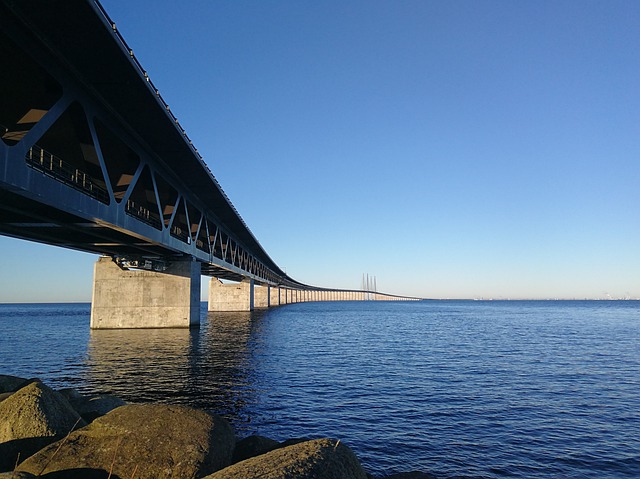
The Oresund Bridge will greatly improve access across the Oresund Strait, which once separated the two countries.
Above all, the Oresund Bridge has become a symbol of the friendship between Sweden and Denmark, bringing the two countries closer together.
Even today, many people and vehicles cross the Oresund Bridge to travel easily between Sweden and Denmark.
The Oresund Bridge is directly connected to the Danish International Airport, making it a great place to visit when sightseeing.
